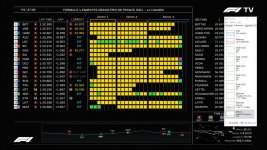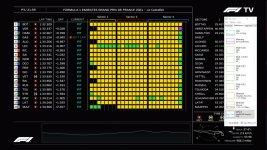ubuysa
The BSOD Doctor
First off, here's my (pretty old now) spec...
Case
COOLERMASTER CM690 III ADVANCED CASE (GREEN)
Processor (CPU)
Intel® Core™ i7 Quad Core Processor i7-6700 (3.4GHz) 8MB Cache
Motherboard
ASUS® Z170-E: ATX, LG1151, USB 3.1, SATA 6GBs
Memory (RAM)
16GB HyperX FURY DDR4 2666MHz (2 x 8GB Kit)
Graphics Card
INTEGRATED GRAPHICS ACCELERATOR (GPU)
1st Storage Drive
2TB WD BLACK 3.5" WD2003FZEX, SATA 6 Gb/s, 64MB CACHE (7200rpm)
1st M.2 SSD Drive
512GB SAMSUNG SM951 M.2, PCIe NVMe (up to 2150MB/R, 1550MB/W)
DVD/BLU-RAY Drive
24x DUAL LAYER DVD WRITER ±R/±RW/RAM
External Hard Drive
WD 3TB My Book USB 3.0 External HDD - WDBFJK0030HBK
Power Supply
CORSAIR 650W CS SERIES™ MODULAR 80 PLUS® GOLD, ULTRA QUIET
Power Cable
1 x 1 Metre European Power Cable (Kettle Lead)
Processor Cooling
Noctua NH-D15S Ultra Quiet Performance CPU Cooler
Thermal Paste
STANDARD THERMAL PASTE FOR SUFFICIENT COOLING
Sound Card
ONBOARD 6 CHANNEL (5.1) HIGH DEF AUDIO (AS STANDARD)
Wireless Network Card
WIRELESS 802.11N 300Mbps/2.4GHz PCI-E CARD
USB/Thunderbolt Options
2 PORT (2 x TYPE A) USB 3.0 PCI-E CARD + STANDARD USB PORTS
Operating System
Windows 10 Home 64 Bit - inc. Single Licence
Operating System Language
United Kingdom - English Language
Windows Recovery Media
Windows 10 (64-bit) DVD with paper sleeve
Office Software
NO OFFICE SOFTWARE
Anti-Virus
NO ANTI-VIRUS SOFTWARE
Browser
Microsoft® Edge (Windows 10 Only)
Monitor
ASUS PA238QR 23" PROART SERIES MONITOR
Keyboard & Mouse
ASUS Cerberus Gaming Keyboard
Gaming Chair
GT Omega PRO Racing Office Chair - Black Next Red Leather
Webcam
Microsoft LifeCam Studio
Cable Management
3 x PCS 1.5M Zip Cable Tidy - Professional Cable Management
Warranty
3 Year Standard Warranty (1 Month Collect & Return, 1 Year Parts, 3 Year Labour)
Delivery
2 - 6 DAY DELIVERY TO EUROPE (COUNTRY DEPENDANT)
Build Time
Standard Build - Approximately 12 to 15 working days
There is a 1TB SATA SSD and a 2TB SATA HDD in there now in addition to the drives listed there.
My issue concerns just one specific use I make of this PC; watching live Formula1 racing via the F1TV service. This is a web-based service that offers several simultaneous viewing options. I can for example, watch the live feed, the data feed (segment times etc.), a tracker showing where the cars are on track, what they call the Pit Lane Channel (PLC) which is a three window display, or I can stay on the in-car video and audio feed from any car.
For practice and qualifying I typically have the PLC on my 1080p TV (connected via HDMI) and the data feed on my 1080p monitor (connected via DVI-D). For the race I usually have the tracker on my monitor.
My problem is that the feed on the monitor always lags further and further behind the TV. I get frequent micro-stalls on the monitor (less than a second, though sometimes around a second) quite frequently, but never on the TV. It doesn't matter what mix of browsers I use on which display, it's always the monitor that micro-stalls and not the TV.
These micro-stalls make the F1 data feed useless (indeed any feed on the monitor) because it usually ends up lagging in time by up to a minute or more behind the live video feed...
These micro-stalls don't look like network buffering to me. Although I'm only on 12Mbps down, if I set the video rate in F1TV on both displays down to the minimum of 493kbps (which gives a terrible 480x270 picture) I still get these micro-stalls on the monitor and not the TV, yet there's plenty of bandwidth to service two displays at that data rate. On the odd and rare occasion when there is network buffering I see the expected 'clock' on screen as the buffer fills.
I think it's my iGPU that isn't up to running both 1080p displays at the same time. Is it likely that the HD530 iGPU in my Intel CPU 'favours' the HDMI output over the DVI output and that's why it's the monitor that always micro-stalls? Do you think my problem is that there's not enough grunt in the HD530?
Would a dedicated graphics card eliminate these micro-stalls on the monitor and if so which card should I buy? Clearly I want the cheapest card that will handle both displays comfortably at 1080p 25fps broadcast video (F1TV claim they transmit 1080p 50fps if your rig can handle it, I don't need that quality though). My monitor has HDMI, DVI-D and DP inputs, my TV has only an HDMI input.
Case
COOLERMASTER CM690 III ADVANCED CASE (GREEN)
Processor (CPU)
Intel® Core™ i7 Quad Core Processor i7-6700 (3.4GHz) 8MB Cache
Motherboard
ASUS® Z170-E: ATX, LG1151, USB 3.1, SATA 6GBs
Memory (RAM)
16GB HyperX FURY DDR4 2666MHz (2 x 8GB Kit)
Graphics Card
INTEGRATED GRAPHICS ACCELERATOR (GPU)
1st Storage Drive
2TB WD BLACK 3.5" WD2003FZEX, SATA 6 Gb/s, 64MB CACHE (7200rpm)
1st M.2 SSD Drive
512GB SAMSUNG SM951 M.2, PCIe NVMe (up to 2150MB/R, 1550MB/W)
DVD/BLU-RAY Drive
24x DUAL LAYER DVD WRITER ±R/±RW/RAM
External Hard Drive
WD 3TB My Book USB 3.0 External HDD - WDBFJK0030HBK
Power Supply
CORSAIR 650W CS SERIES™ MODULAR 80 PLUS® GOLD, ULTRA QUIET
Power Cable
1 x 1 Metre European Power Cable (Kettle Lead)
Processor Cooling
Noctua NH-D15S Ultra Quiet Performance CPU Cooler
Thermal Paste
STANDARD THERMAL PASTE FOR SUFFICIENT COOLING
Sound Card
ONBOARD 6 CHANNEL (5.1) HIGH DEF AUDIO (AS STANDARD)
Wireless Network Card
WIRELESS 802.11N 300Mbps/2.4GHz PCI-E CARD
USB/Thunderbolt Options
2 PORT (2 x TYPE A) USB 3.0 PCI-E CARD + STANDARD USB PORTS
Operating System
Windows 10 Home 64 Bit - inc. Single Licence
Operating System Language
United Kingdom - English Language
Windows Recovery Media
Windows 10 (64-bit) DVD with paper sleeve
Office Software
NO OFFICE SOFTWARE
Anti-Virus
NO ANTI-VIRUS SOFTWARE
Browser
Microsoft® Edge (Windows 10 Only)
Monitor
ASUS PA238QR 23" PROART SERIES MONITOR
Keyboard & Mouse
ASUS Cerberus Gaming Keyboard
Gaming Chair
GT Omega PRO Racing Office Chair - Black Next Red Leather
Webcam
Microsoft LifeCam Studio
Cable Management
3 x PCS 1.5M Zip Cable Tidy - Professional Cable Management
Warranty
3 Year Standard Warranty (1 Month Collect & Return, 1 Year Parts, 3 Year Labour)
Delivery
2 - 6 DAY DELIVERY TO EUROPE (COUNTRY DEPENDANT)
Build Time
Standard Build - Approximately 12 to 15 working days
There is a 1TB SATA SSD and a 2TB SATA HDD in there now in addition to the drives listed there.
My issue concerns just one specific use I make of this PC; watching live Formula1 racing via the F1TV service. This is a web-based service that offers several simultaneous viewing options. I can for example, watch the live feed, the data feed (segment times etc.), a tracker showing where the cars are on track, what they call the Pit Lane Channel (PLC) which is a three window display, or I can stay on the in-car video and audio feed from any car.
For practice and qualifying I typically have the PLC on my 1080p TV (connected via HDMI) and the data feed on my 1080p monitor (connected via DVI-D). For the race I usually have the tracker on my monitor.
My problem is that the feed on the monitor always lags further and further behind the TV. I get frequent micro-stalls on the monitor (less than a second, though sometimes around a second) quite frequently, but never on the TV. It doesn't matter what mix of browsers I use on which display, it's always the monitor that micro-stalls and not the TV.
These micro-stalls make the F1 data feed useless (indeed any feed on the monitor) because it usually ends up lagging in time by up to a minute or more behind the live video feed...
These micro-stalls don't look like network buffering to me. Although I'm only on 12Mbps down, if I set the video rate in F1TV on both displays down to the minimum of 493kbps (which gives a terrible 480x270 picture) I still get these micro-stalls on the monitor and not the TV, yet there's plenty of bandwidth to service two displays at that data rate. On the odd and rare occasion when there is network buffering I see the expected 'clock' on screen as the buffer fills.
I think it's my iGPU that isn't up to running both 1080p displays at the same time. Is it likely that the HD530 iGPU in my Intel CPU 'favours' the HDMI output over the DVI output and that's why it's the monitor that always micro-stalls? Do you think my problem is that there's not enough grunt in the HD530?
Would a dedicated graphics card eliminate these micro-stalls on the monitor and if so which card should I buy? Clearly I want the cheapest card that will handle both displays comfortably at 1080p 25fps broadcast video (F1TV claim they transmit 1080p 50fps if your rig can handle it, I don't need that quality though). My monitor has HDMI, DVI-D and DP inputs, my TV has only an HDMI input.


